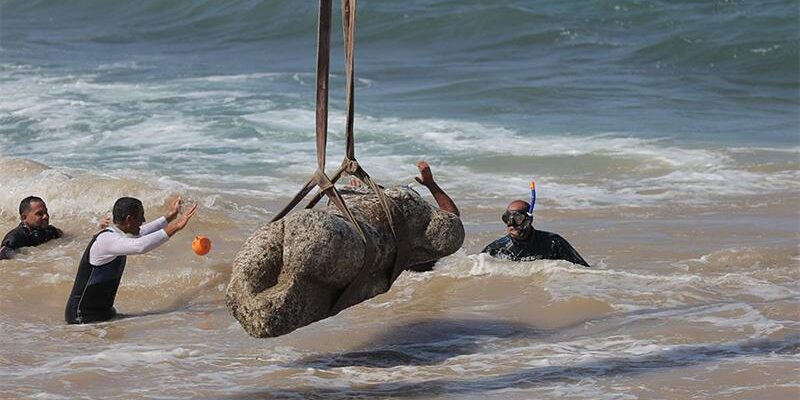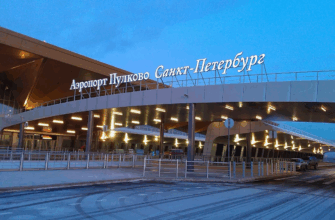ALEXANDRIA, EGYPT – The silent depths of the Mediterranean Sea, specifically off the northern coast of Alexandria, have once again relinquished their ancient secrets. In a remarkable archaeological endeavor, the Egyptian Ministry of Tourism and Antiquities announced the successful retrieval of three colossal statues, providing a tangible link to a bygone era where pharaohs, Greeks, and Romans shaped the narrative of this historic land.
A Trio of Timeless Artifacts
The meticulous operation in Abu Qir Bay, a suburb often associated with significant underwater discoveries, brought to the surface a diverse collection of artifacts, each bearing witness to distinct periods of Egyptian history:
- A Quartz Sphinx Statue: Adorned with the cartouche of the legendary Pharaoh Ramesses II. This discovery offers a direct connection to one of Egypt`s most powerful and prolific rulers, whose reign left an indelible mark on the landscape and psyche of ancient Egypt.
- A Granite Statue: Depicting an as-yet-unidentified dignitary from the Ptolemaic dynasty. The Ptolemies, descendants of Alexander the Great`s general Ptolemy I Soter, ruled Egypt for nearly three centuries, merging Hellenistic culture with ancient Egyptian traditions. This find is a valuable piece in understanding that fascinating synthesis.
- A White Marble Statue: Representing an ancient Roman nobleman. This artifact underscores the pervasive influence of the Roman Empire, which absorbed Egypt following the defeat of Cleopatra VII, turning it into a vital province for grain supply and cultural exchange.
It seems the Mediterranean, often perceived as a mere backdrop for leisurely cruises and holiday selfies, occasionally remembers its profound role as history`s grand custodian, occasionally surfacing reminders of its past.
Heracleion: The City That Slept Underwater
These recent retrievals are intrinsically linked to the submerged city of Heracleion (also known as Thonis by the Egyptians), nestled quietly beneath the waters of Abu Qir Bay. This ancient city, believed to have been founded around the 8th century BCE, was once the preeminent trading hub and port of ancient Egypt, a bustling nexus of commerce and culture, until the rise of Alexandria in 331 BCE. Approximately 1200 years ago, Heracleion decided to take a permanent, rather deep, nap, eventually succumbing to seismic activity and rising sea levels.
Rediscovered in 2000, Heracleion has since been heralded as an “underwater museum,” offering unparalleled insights into the daily life, religious practices, and economic power of an ancient metropolis. Exploring its remains, lying up to 45 meters beneath the surface, certainly beats the typical museum queues, albeit requiring a slightly more specialized entry ticket.
The Delicate Balance of Underwater Archaeology
Sherif Fathy, Egypt`s Minister of Tourism and Antiquities, emphasized the careful approach taken with these invaluable treasures. He noted that while some artifacts are brought to the surface for study and preservation, others are deliberately left in their watery resting places to maintain their historical context and ensure their long-term survival. This selective extraction, conducted “in accordance with scientific standards and under serious control,” highlights the ethical considerations inherent in underwater archaeology.
Mohammed Ismail Khaled, Secretary-General of the Supreme Council of Antiquities, underscored the significance of this particular operation, stating it marks the first instance in 25 years that Egyptian authorities have directly retrieved artifacts from the Mediterranean seabed. This quarter-century interval speaks volumes about the complexity, cost, and meticulous planning required for such sensitive undertakings.
Echoes Through Time and Future Discoveries
The recovery of these statues is more than just an addition to a museum collection; it’s a vital re-connection to the interwoven history of Egypt. The presence of artifacts spanning Pharaonic, Ptolemaic, and Roman periods within the same geographical area vividly illustrates the layers of civilization that flourished along this pivotal coastline.
As the sands of time continue to shift and the waters of the Mediterranean slowly reveal their stories, each discovery from Heracleion reminds us that history is not static, but a dynamic narrative constantly being rewritten from the depths. These latest finds not only enrich our understanding of ancient Egypt but also reignite curiosity about the myriad secrets that still await discovery in the world`s most historically rich waters.







